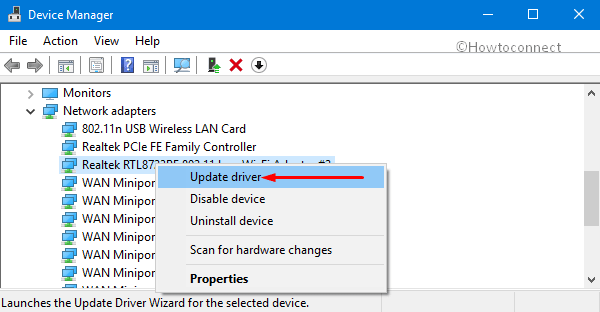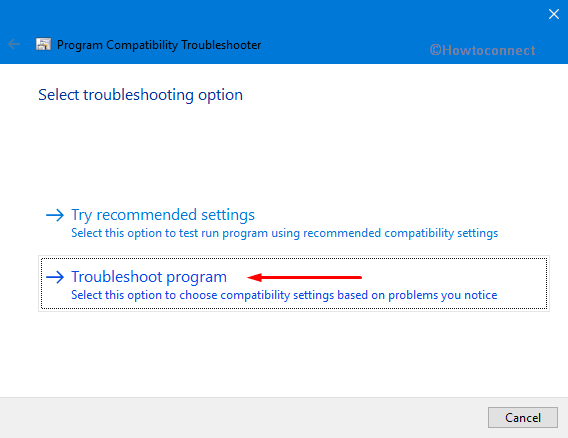

- #HOW TO INSTALL HP WIFI DRIVER IN WINDOWS 10 DRIVERS#
- #HOW TO INSTALL HP WIFI DRIVER IN WINDOWS 10 UPDATE#
- #HOW TO INSTALL HP WIFI DRIVER IN WINDOWS 10 WINDOWS 10#
- #HOW TO INSTALL HP WIFI DRIVER IN WINDOWS 10 CODE#
- #HOW TO INSTALL HP WIFI DRIVER IN WINDOWS 10 DOWNLOAD#
But, if something isn’t working, it’s likely that you can’t make it work simply by installing a hardware driver. if you’re using an older Linux distribution, upgrading to a newer one will get you the latest hardware support and improve things.
#HOW TO INSTALL HP WIFI DRIVER IN WINDOWS 10 DRIVERS#
In general, if something doesn’t work on Linux out-of-the-box - and if it doesn’t work after installing the proprietary drivers your Linux distribution provides - it probably won’t work at all. Generally, this involves finding your printer’s manufacturer in the list and choosing the model name of the printer. When you use a printer-configuration tool to configure CUPS (the Common Unix Printing System), you’ll be able to choose an appropriate driver for your printer from the database.


You may need to install drivers for printers, however. Every Linux distribution handles it in a different way. Fedora is against proprietary drivers and doesn’t make them so easy to install. Linux Mint has a “Driver Manager” tool that works similarly. It will detect which proprietary drivers you can install for your hardware and allow you to install them. Open the dash, search for “Additional Drivers,” and launch it. On Ubuntu and Ubuntu-based distributions, there’s an “Additional Drivers” tool. How you install proprietary drivers depends on your Linux distribution.

Some Wi-Fi drivers are also still proprietary, so your wireless hardware may not work until you install them. There are open-source drivers that can get your graphics working, but they don’t offer the same level of 3D gaming performance. Most commonly, these include the proprietary graphics drivers for both NVIDIA and AMD graphics hardware, which provide more graphics performance for gaming on Linux. These are hardware drivers that the manufacturers write and maintain on their own, and their closed-source nature means most Linux distributions won’t bundle and automatically enable them for you. Some manufacturers to provide their own, closed-source, proprietary drivers. Your Linux system should automatically detect your hardware and use the appropriate hardware drivers. You don’t have to hunt down manufacturer-provided drivers for every bit of hardware on your Linux system and install them. In other words, most hardware drivers are included out-of-the-box.
#HOW TO INSTALL HP WIFI DRIVER IN WINDOWS 10 CODE#
But they’re sometimes developed by the hardware manufacturer themselves, who contributes their code directly to the Linux kernel and other projects. These drivers are sometimes developed by hobbyists. That means most of the available hardware drivers are already on your computer, included along with the kernel, graphics server, and print server. These hardware drivers are generally part of the Linux kernel, although bits of graphics drivers are part of Xorg (the graphics system), and printer drivers are included with CUPS (the print system). Most of the drivers for hardware on your computer are open-source and integrated into Linux itself.
#HOW TO INSTALL HP WIFI DRIVER IN WINDOWS 10 DOWNLOAD#
Hardware that doesn’t work is usually just a quick driver download away from working. Unless you have an ancient device that only works with older versions of Windows, the manufacturer has done the work of making it work with Windows. And If you have any questions, comment down below and let us know.If hardware isn’t working on Windows, there’s usually a driver to make it work.
#HOW TO INSTALL HP WIFI DRIVER IN WINDOWS 10 WINDOWS 10#
If you are looking for solutions to common problems on Windows 10 or facing network connection issues on Windows 10, follow our linked guides to solve the problem. Lastly, you can directly go to a manufacturer’s website and download the specific driver you need.
#HOW TO INSTALL HP WIFI DRIVER IN WINDOWS 10 UPDATE#
However, if you want to update the driver of a not-so-popular component like a generic Wi-Fi adapter, then third-party driver programs can be of great help. For most users, the device manager on Windows 10 will suffice the need. So that is how you can update all drivers on your Windows 10 laptop or desktop. That’s it.įollow Our Guide and Update All Drivers on Windows 10 You can now download the drivers and install it on your Windows 10 computer. On the next page, you will find all the drivers for your Lenovo laptop. Here, enter the model number or just the name of the laptop. Click here and open the Lenovo Support page.


 0 kommentar(er)
0 kommentar(er)
